The Ultimate Guide to Business Archetypes & Value Ladder Styles

By Connor
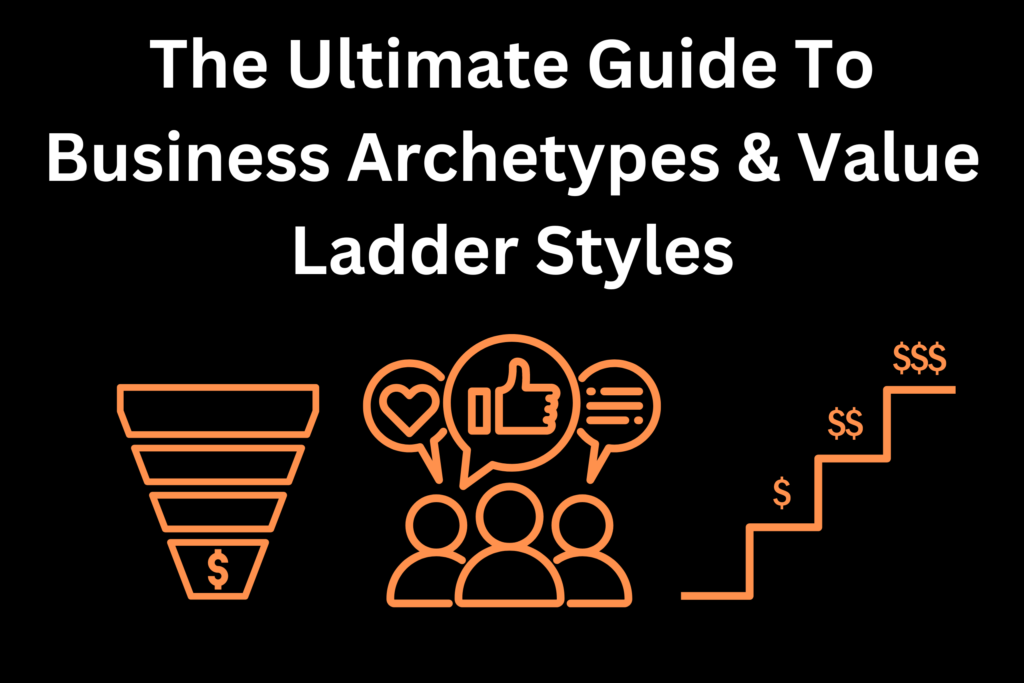
Your value ladder IS your business.
Let that sink in.
Your value ladder informs everything that you create, how you structure your marketing, what you do with your content, and how you move people from point A to point B.
It literally becomes the roadmap for your entire business. And yet, dozens and dozens of creators simply don’t use them. They’ve got one high-ticket offer that they slave away trying to sell.
2+ hours in the DMs. 2+ hours commenting for growth. Sales call after sales call trying to sell someone the house without ever letting them take a peak around.
There has to be a better way.
I don’t know about you, but I didn’t start a business just to find myself in another rat race.
I did it to give myself more freedom. I did it to live on my own terms. I did it to get PAID to CREATE.
And that commenting + DM game just doesn’t feel like freedom to me.
Don’t get me wrong, it works. It’s what helped me quit my job and go all in on myself.
But it also left me working 12 hours per day. And it took ALL of the joy out of creating.
I was a glorified sales person. Except unlike my sales job, I had to fulfill everything I sold. So I basically gave up one job to find myself right back in another one. One where I was building a business for my clients, not for myself.
And that just doesn’t sit well with me.
Exploring The Different Business Archetypes
A value ladder is a value ladder. That can’t change.
But depending on your business archetype, the way you get people into your ecosystem and move them along your ladder can change dramatically.
There are 3 main styles:
- Funnel Hackers
- Brand Builders
- Ladder Creators
Let’s break down each one, shall we?
Funnel Hackers
If you’re not familiar with it, the funnel hacking approach was popularized by Russell Brunson, the god father of value ladders (if you want to learn more about Russell, check out this letter).
First, let’s go over what a funnel hacker is.
Essentially, these people go out and find high converting sales funnels and then reverse engineer them to use in their own businesses.
It’s a genius strategy. Why create a funnel from scratch when you can go find funnels that are already performing well and plug them right into your own business?
This is how you work smarter, not harder.
There are a few KEY differentiators for funnel hackers.
The first is that they primarily drive traffic to their funnels (and eventually value ladders) via ads. Some of them also have personal brands, but for the most part, they fill their funnels and start moving people up their value ladders with ads.
This has a couple advantages and disadvantages. By far, the biggest advantage is speed. You can test and iterate SO much faster using ads than you can relying strictly on organic traffic (at least initially. When you have a large audience, testing and iterating with organic traffic can be done pretty quickly).
Every 1-4 weeks, you’re able to test different landing pages, different offers, and different products/services at each rung of your value ladder.
You gather so much data and feedback from your leads, it’s easy to make minor changes and see what’s ACTUALLY driving sales.
Of course, the drawback to this approach is that you WILL waste money in the beginning testing out what people like.
Organic traffic is free. That’s not the case with ads. If your leads don’t want to join your list or buy your product, you end up wasting money on people who don’t convert.
Another drawback is that you have to build more trust once your leads are inside of your value ladder.
Organic content builds that trust for you, so when people finally enter your value ladder, they already know, like, and trust you to some extent. That’s why people like Justin Welsh have been able to grow lists of 200,000+ people without lead magnets. His content and newsletter ARE the lead magnets.
That’s why almost every funnel hacker HAS to start with a lead magnet. There’s no other way to get people into your ecosystem when all they did was see an ad. You have to give them some value first.
The last thing I want to point out about funnel hackers is how deliberate they are. Since they paid money to acquire their leads, they are incredibly intentional about moving people up their value ladders.
They’ll use things like welcome offers, cart bumps, upsells, down sells, etc. to get people buying, cover their ad spend, and start turning a profit as quickly as possible.
There is also A LOT more email marketing involved on the backend once you get your leads into your ecosystem.
Picture it this way: content for a brand builder is what emails are like for funnel hackers.
Case Study: Russel Brunson
At this point, you HAD to know I was gonna be breaking down a Russell Brunson funnel. He’s just too good not to.
I’m going to focus on his “Your First Funnel Challenge” here to show you how deliberately he moves you through his value ladder.
This is the first landing page after the ad you see on google that gets you to give him your email.
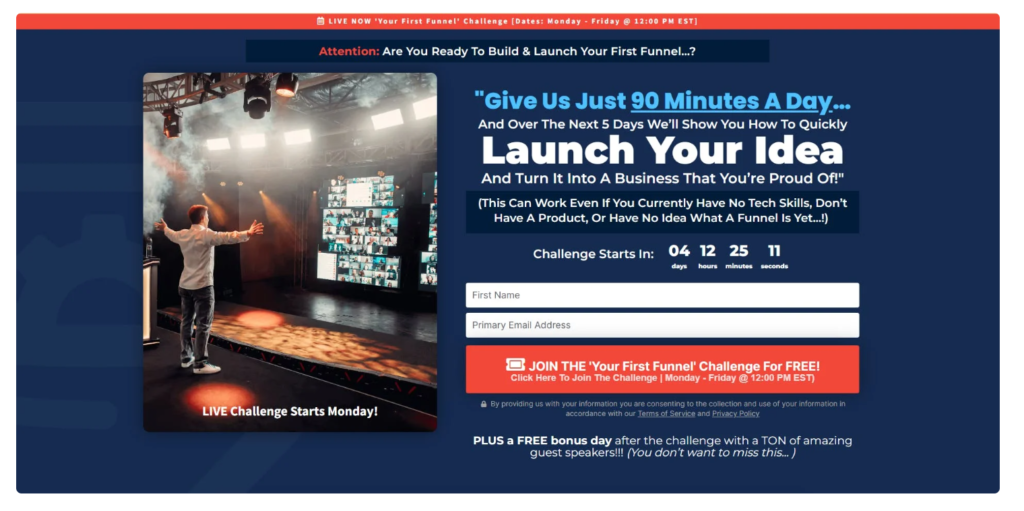
Again, since most of the people coming to this page see it after clicking an ad, Russell has to add A LOT more curiosity to his landing pages to get people to take action.
Compare that to a brand builder (as we’ll see in the next section), and you’ll notice the landing pages for funnel hackers are slightly more involved.
Brand builders have built the trust and authority with their content, so they’re simply giving you what you came to the page for.
Back to Russell’s funnel. After you submit your email, you’re brought to the next page:
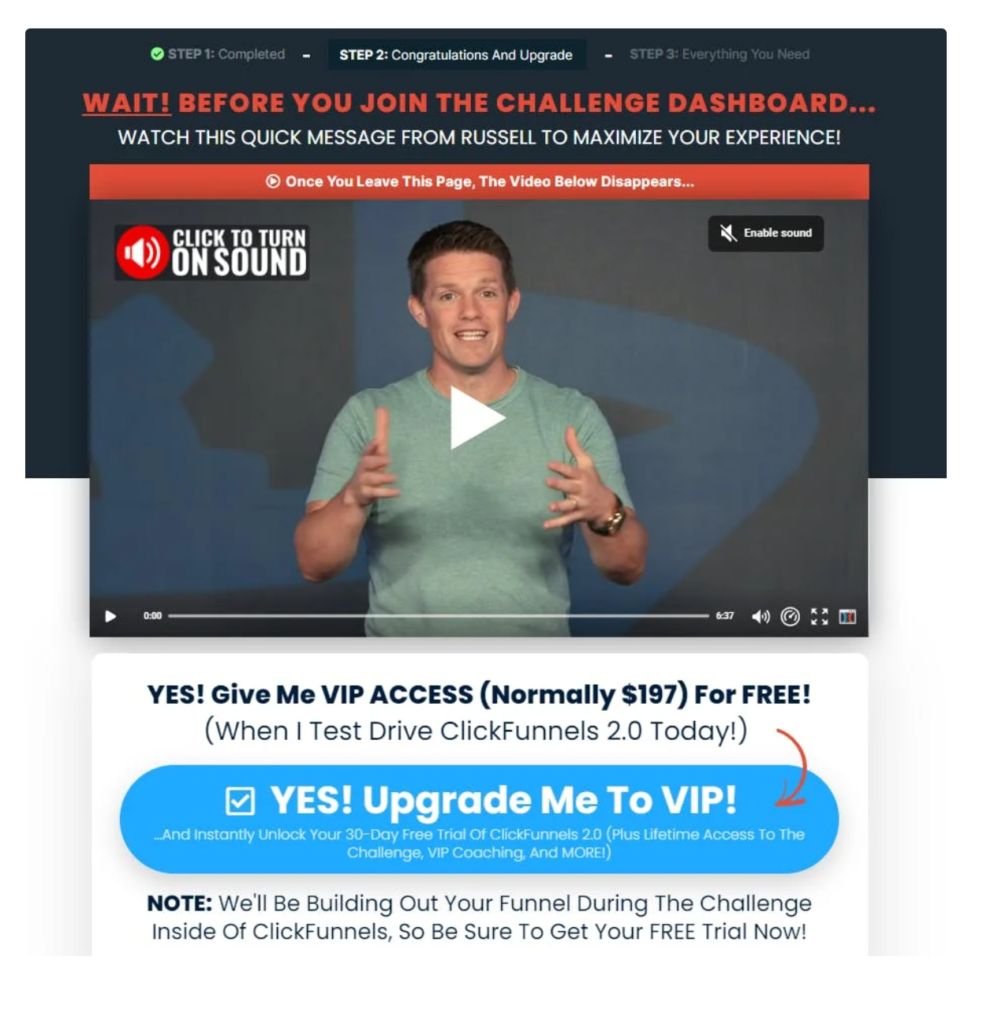
Here, Russell tries to get you to upgrade to the VIP membership, giving you a free trial of his software, ClickFunnels, which is the next stage in his value ladder
If you choose to upgrade, you’re brought to checkout and given the following 2 cart bumps:
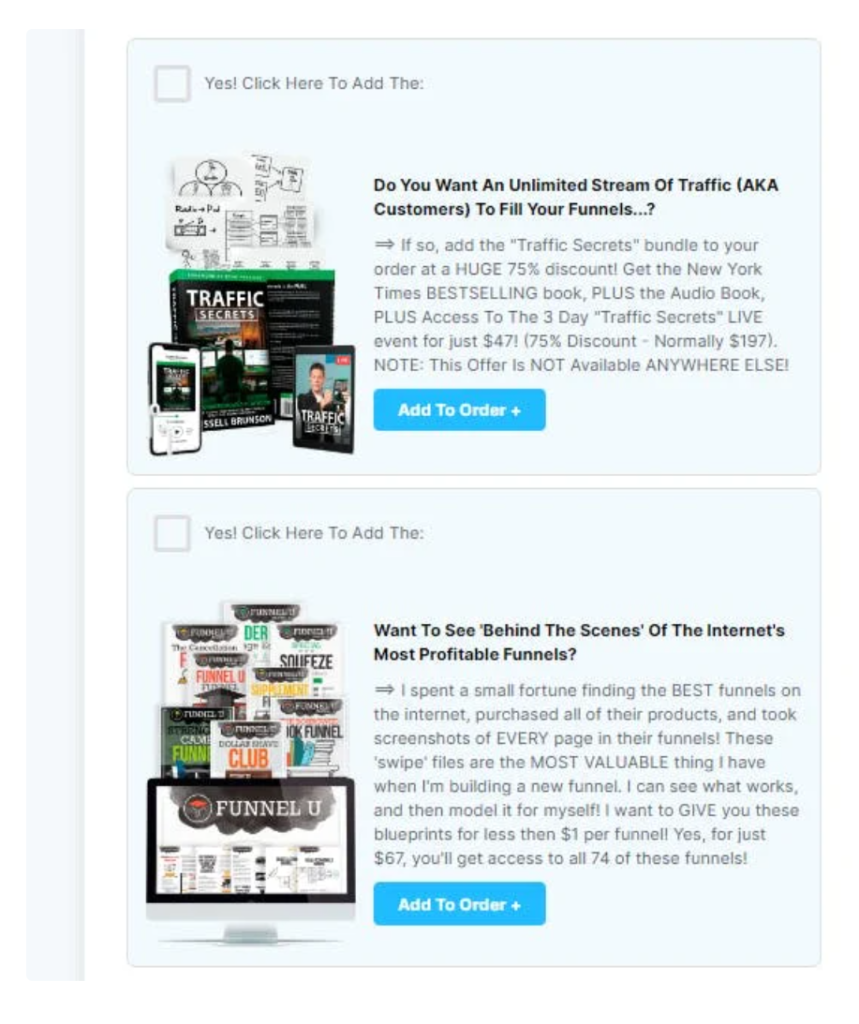
We just went from a free challenge, to getting a free trial for his software to 2, $47-$67 courses we can add to our order.
When you’ve got the volume (like he does), these things ad up. Those cart bumps alone likely cover his ad spend, so he’s getting leads and customers for FREE.
Finally, whether you accept or decline the VIP upsell, you get a confirmation email where he guides you further into his ecosystem:
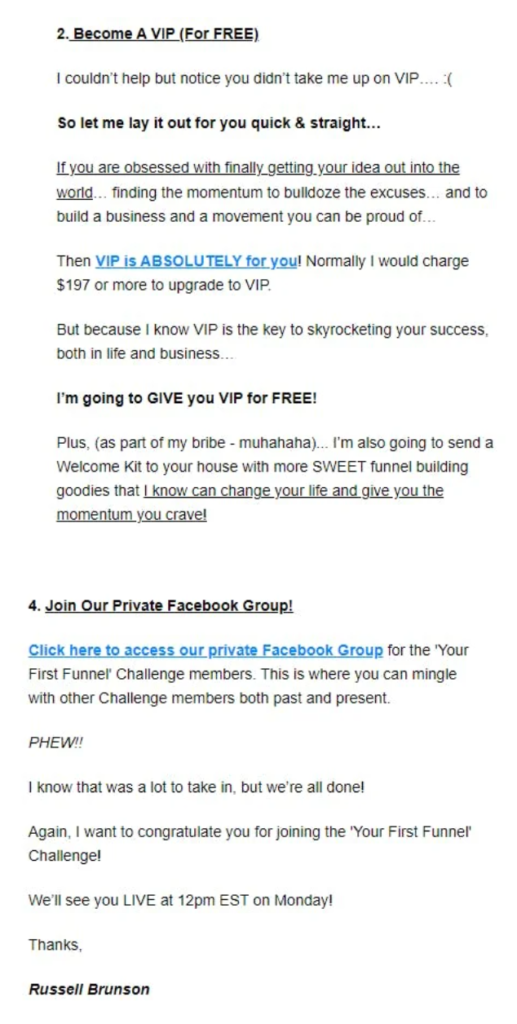
You can either become a VIP member or join the private Facebook group.
Although both options are free, hes’ getting you to say “yes” more times, which makes it easier for him to move you higher and higher up his value ladder when he chooses to do so
See how deliberate he is with how he moves you up the ladder. It’s absolutely GENIUS marketing.
Brand Builders
Build an audience. Do some client work. Turn your experience into a course. Start “passively” selling that course and remove yourself from client work .
Not everyone follows that exact path, but especially on places like LinkedIn, this is the default.
You HAVE to grow an audience. You HAVE to do client work. You HAVE to spend hours commenting and DMing.
This is the route I started out on.
I know I mentioned it before, but I want to be perfectly clear: it works.
You can have 1 high-ticket offer, post content, engage like crazy, send 10-20 DMs to your ICP everyday, and take sales calls left and right.
That’s exactly what I did.
It helped me quit my job and go all in on my own thing.
But it certainly was not the freedom I was looking for. I left one rat race and found myself in another.
That being said, there are a NUMBER of distinct advantages to going the Brand Builder route.
First, it’s free (essentially). All you need is a social media account and an internet connection and you’re good to go.
You can start sharing your thoughts and building an engaged audience with ZERO startup cost.
Additionally, your content builds the trust, familiarity, and likeability that funnel hackers need to do on the backend with their email marketing.
Once people join your list, they’re already highly engaged.
Think about it. Who would you rather have on your list: somebody who saw 1 ad and downloaded a free lead magnet or somebody who has been consuming your content for 3 months and decided to join your list just to read your thoughts and see what other kind of value you can provide them.
I’m going with the second option all day every day.
The flip side of this argument comes back to time and effort.
I know exactly who my ICP is and what their pain points and desires are. I could put together an ad right now and start getting people into my value ladder overnight. That’s the beauty of the funnel hacker approach.
But with a personal brand, it takes time AND consistent effort.
First, you have to become a category of one. You can’t just build a personal brand. You have to build a personal category.
Then you have to produce content daily.
Then you have to engage with others daily (if you’re on LinkedIn, Threads, or X. You can grow on other platforms without engagement).
Then you have to wait 3-12 months to build relationships, authority, and trust.
The time delay and sacrifice are SO much higher with a personal brand than with a funnel hacker approach.
And as you’re building your audience, you still have to make money. That means either a) doing client work or b) working another job while you build up a large enough audience and products/services that you can sell within your value ladder.
But like everything, there’s a tradeoff. Since you spend so much time building up that trust and authority with your content, selling on the backend is easier.
You can take a newsletter approach instead of an email marketing approach, send your list fewer emails, and opt for a “passive” pitching model where you tell them what you do and let them decide if they want to take action.
Justin Welsh is a pro at this:
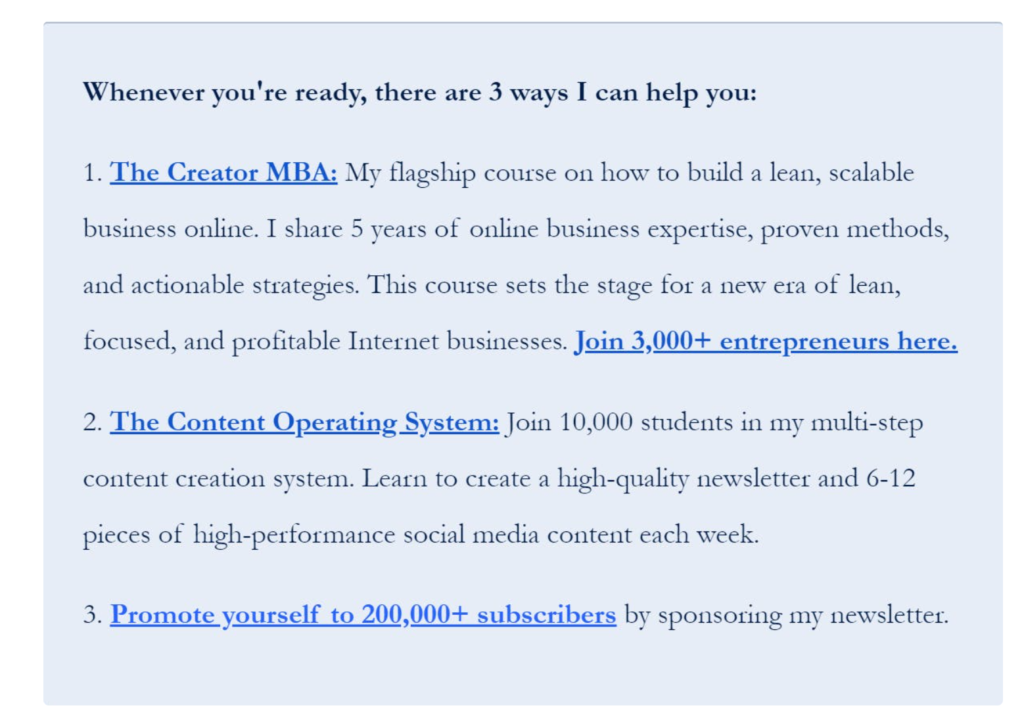
He sends 1 email every week, and let’s us decide if and when we’re ready to take action.
If you’re somebody who hates sales and making offers, this is a SUPER attractive approach.
You essentially let your content do all the talking.
Case Study: Ben Meer
Ben Meer is a perfect example of a brand builder. He’s built MASSIVE authority, trust, and likeability through his content.
So when people visit his website to buy his products, they know exactly what they want and what they’re getting. So he simply gives it to them.
Ben doesn’t have a wildly complex value ladder (which goes to show that you don’t need a complex value ladder to have a successful business), so it is very easy to break down.
Similar to Justin Welsh, he ends EVERY email with the following:
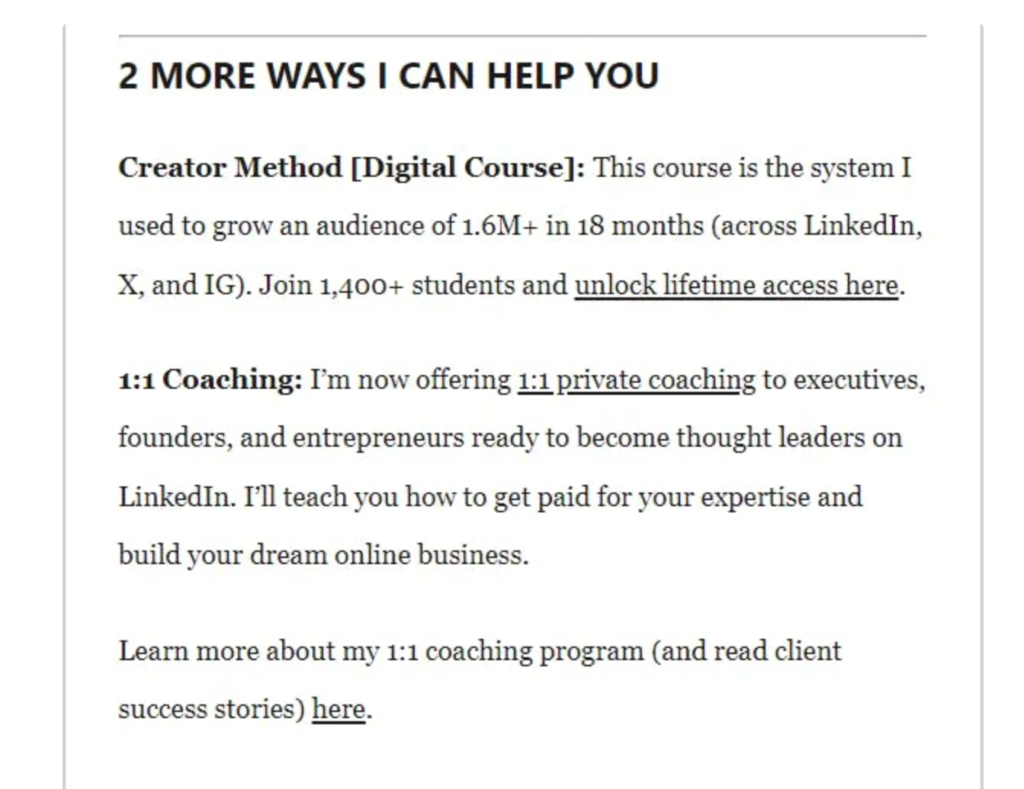
He let’s you know exactly how he can help you, and he let’s you make the decision whenever you’re ready.
If you want to buy his course, you’re brought to a very simple landing page:
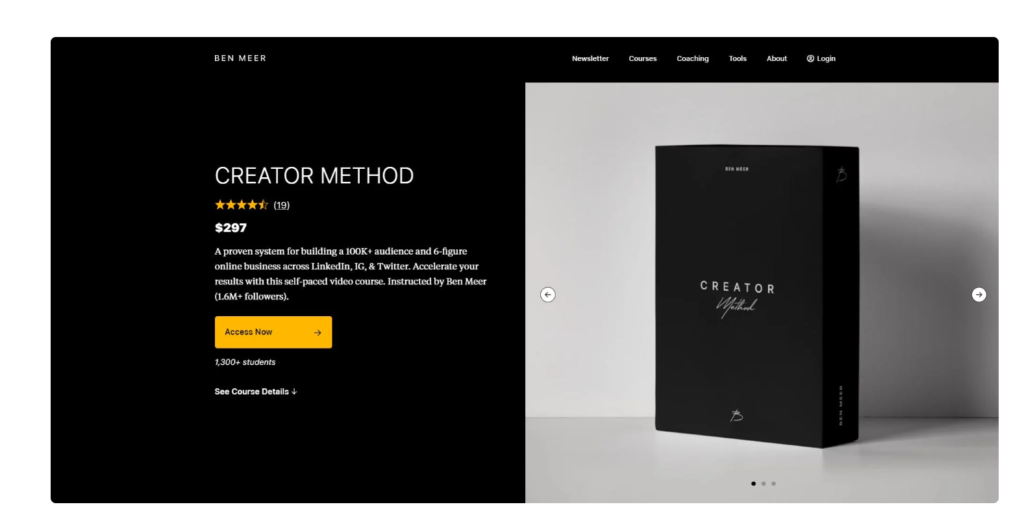
You know what you want, so he’s giving it to you.
Simple, easy, and I would assume a decently high conversion rate. Again, the content (and in his case, the amount of social media growth that has resulted from his content) does a lot of the heavy lifting for him.
And when you go to buy the course, you’re brought to another VERY simple checkout page:
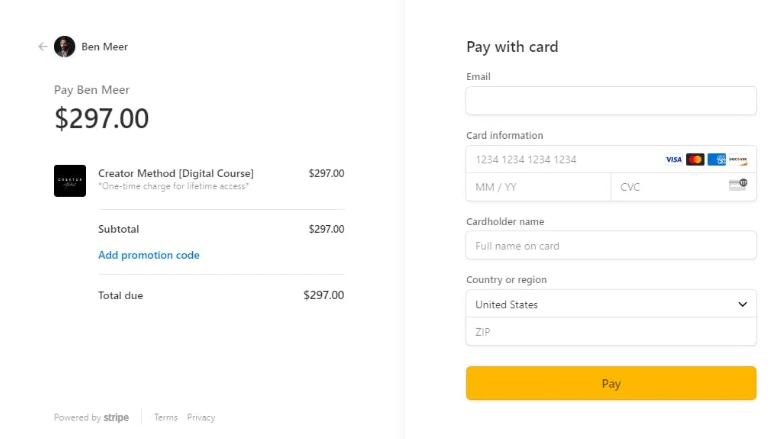
There’s no upsells, down sells, or cart bumps. He’s simply giving you exactly what you want.
I haven’t bought the course, so I can’t say what the backend emails do, but my guess is it’s nothing more than a thank you/confirmation email.
The only other product/service he has on his value ladder is coaching, so there’s not much room for him to bring you anywhere else on the ladder.
Ladder Creators
Finally, we’ve got what I like to call Ladder Creators.
Essentially, we take the best of both worlds and put them into one approach. It’s similar to the funnel hacker approach but specifically for the creator economy.
That means publishing content, growing a personal brand, and starting a creator newsletter. But it also means intentionally moving people through a value ladder, creating sales funnels with cart bumps, upsells, down sells, etc. and eventually running ads.
The biggest thing Brand Builders miss is strategic sales funnels, especially on LinkedIn. They might have a newsletter and a coaching program and that’s it.
The MASSIVE creators are better about this. They have VERY clear value ladders. Lead magnets, low-ticket courses, medium-ticket courses, communities, cohorts, 1:1 coaching, etc. They’ve got ’em all.
BUT, and this is a big but, they are not strategic about how they move people through their value ladder AT all.
You buy a course, and their job is done. MAYBE they try to get you on a mini-upsell, but tons of creators don’t even do that.
There’s no email marketing that goes into it afterwards either. They put all the pressure on YOU to complete the course, get value from it, and then potentially buy another product from them.
But again, all of that responsibility falls on you as the consumer. They’re not guiding your journey at all.
And that’s where Ladder Creators have a distinct advantage.
We take the passive approach that personal brands take. We let people buy when they’re ready. And we create value with our content and newsletters.
But when people DO enter our ecosystem, we go into funnel hacker mode. We use upsells, down sells, and cart bumps. We follow up with some email marketing to guide people along on our value ladders. We’re strategic about who receives what. And dare I utter the 2 words every creator seems to spit on: we use paid ads when our businesses are large enough so we can accelerate our growth, run lean operations, and actually enjoy the freedom businesses we set out to create.
Being a Ladder Creator doesn’t mean you’ll never have to do client work again. Especially in the beginning, it’s a VERY useful way to earn some steady income.
But we are VERY selective and VERY intentional about who we do client work with.
If you want to keep client work in your ladder (which you don’t HAVE to as we’ll see in the example below), you put it at the very end. Only the people who are most qualified make it to this stage. That way, you don’t have to waste your time on sales calls with people who weren’t going to convert or pitching cold in the DMs all day.
Case Study: Kyle Asay
Kyle is one of the best Ladder Creators I know from LinkedIn. He meshes the personal brand and funnel hacker approach so well. And it’s because he has to.
Working a full-time executive job, Kyle doesn’t have time to take on client work. So his business has to run exclusively on information products.
And he is able to generate over $500k per year with an audience of <55k across platforms.
That’s how powerful being a Ladder Creator can be.
When you first join his email list, you get a welcome email with a special “one-time only” welcome offer:

Immediately, we’re being guided up his value ladder. 20% off one of his signature courses. That takes us from a fishy on his list to a customer. And once you become a customer for the first time, you’re FAR more likely to buy again.
That’s why using things like Welcome Offers can be so effective. First, you get to learn who’s joining your list and what they really want. But you also use a low-friction offer to get people to say “yes” once so that they’re more likely to say “yes” again.
Kyle also uses cart bumps like a master. Right before checkout on EVERY product, you have a chance to add something to your order for a special, discounted price:
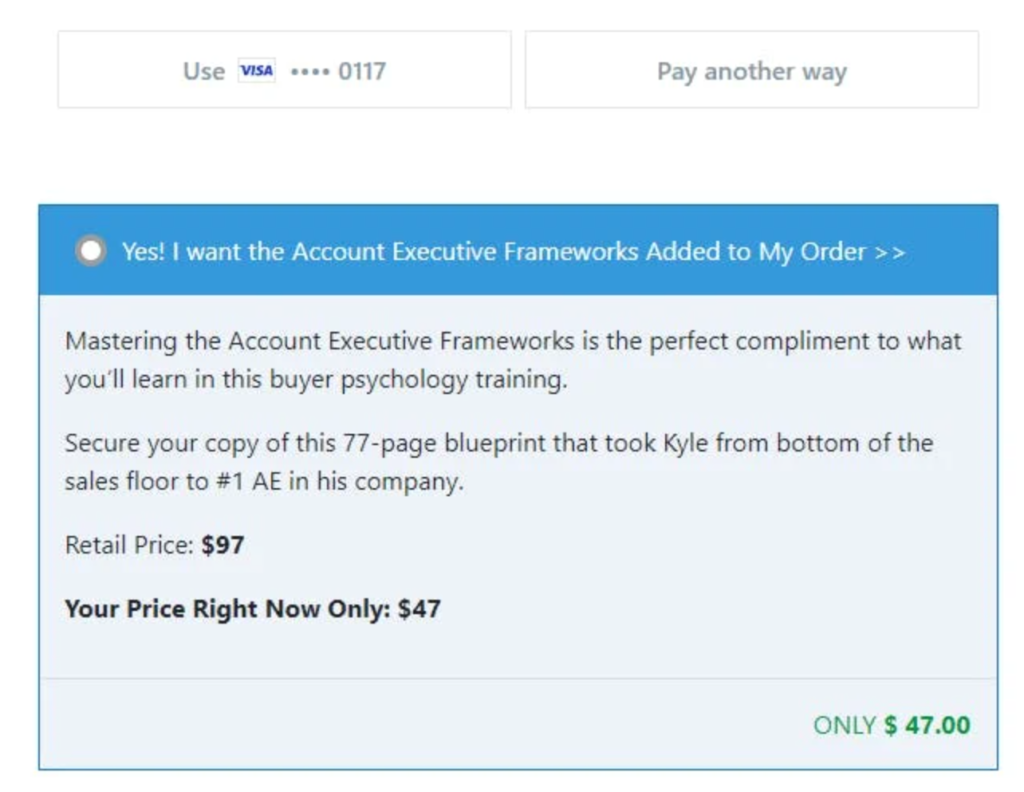
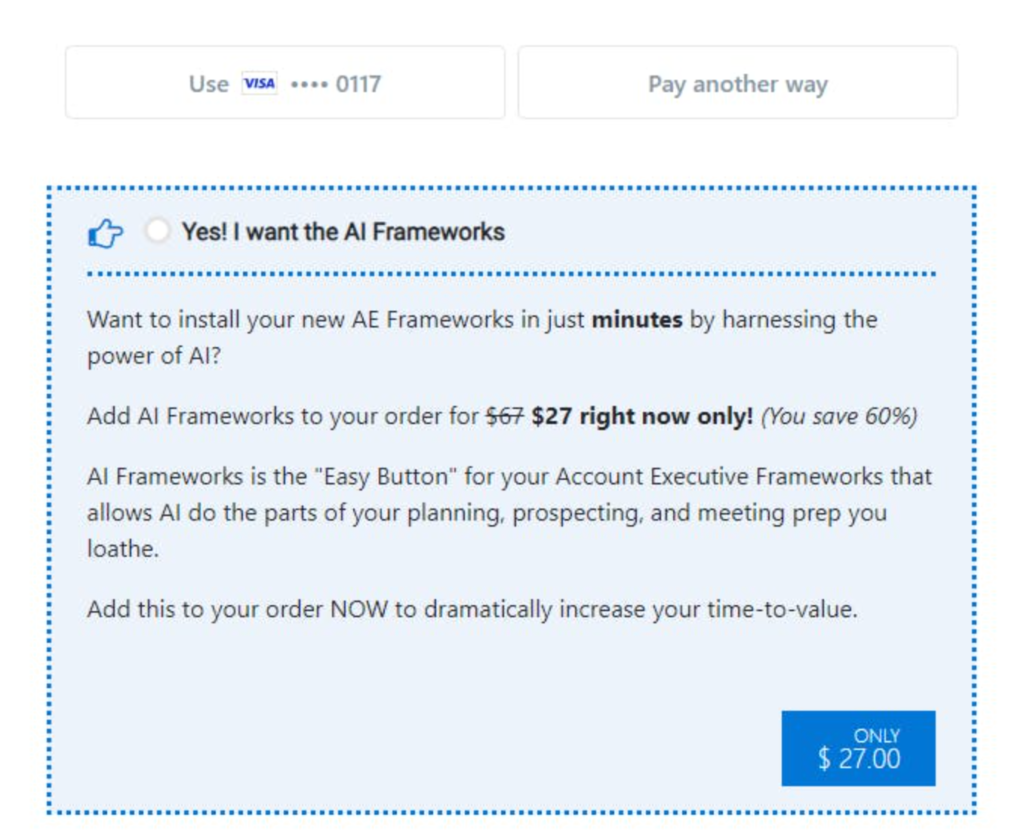
Imagine 100 people buy his courses every month. If only half of them add a $27-$47 cart bump, he’s adding an additional $1350-$2350 to his revenue. And that’s without getting any new customers. He’s simply making the customers he already has more valuable.
One of the major things that turns people off from the funnel hacker approach is that it seems spammy. You’re constantly sending emails, upselling, down selling, etc. To some, it just feels sleezy.
And that’s why being a Ladder Creator is so powerful.
You can build an audience like anyone using the Brand Builder model. But on the backend, you make that audience more profitable by taking some of the strategic and intentional approaches that funnel hackers use.
Russell clearly guides you up a value ladder (to some, it may feel like a push). Ben doesn’t guide you at all. He let’s you make a 100% autonomous decision. Kyle strikes a happy medium. He guides you along his ladder, but it a way that still lets you feel like you’re in control. And that’s how he’s been able to create a business without ANY client work, while working a full-time job.
The Ladder Creator Manifesto
As Ladder Creators, we want freedom.
And constantly chasing the next sale isn’t freedom. Our ladders become our qualifiers. The way we structure them ensures that ONLY the highest quality leads ever make it to a sales call.
It frees up our time to do more of what we love: create. And in the process, we end up serving more people at a higher quality. People enter our ecosystems and are directed to exactly WHAT they need WHEN they need it.
We make more money. And our customers and clients get better help.
It’s a win/win.
Freedom businesses aren’t created overnight. And Ladder Creators know that.
We sacrifice short-term gain for long-term freedom. We build with the end in mind. Our mission is to serve the people who need our help while also designing lifestyles we don’t need a break from.
That’s what it means to be a Ladder Creator.
And that’s why I love being one so much.
